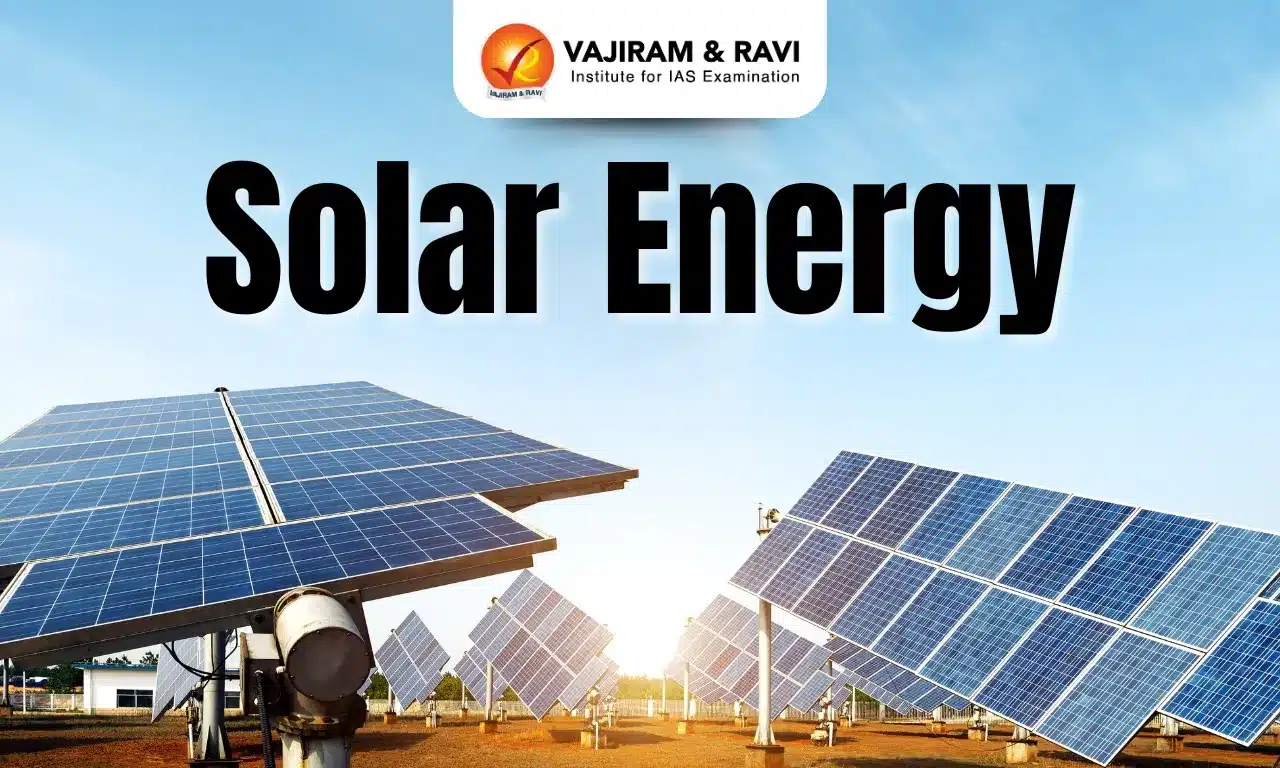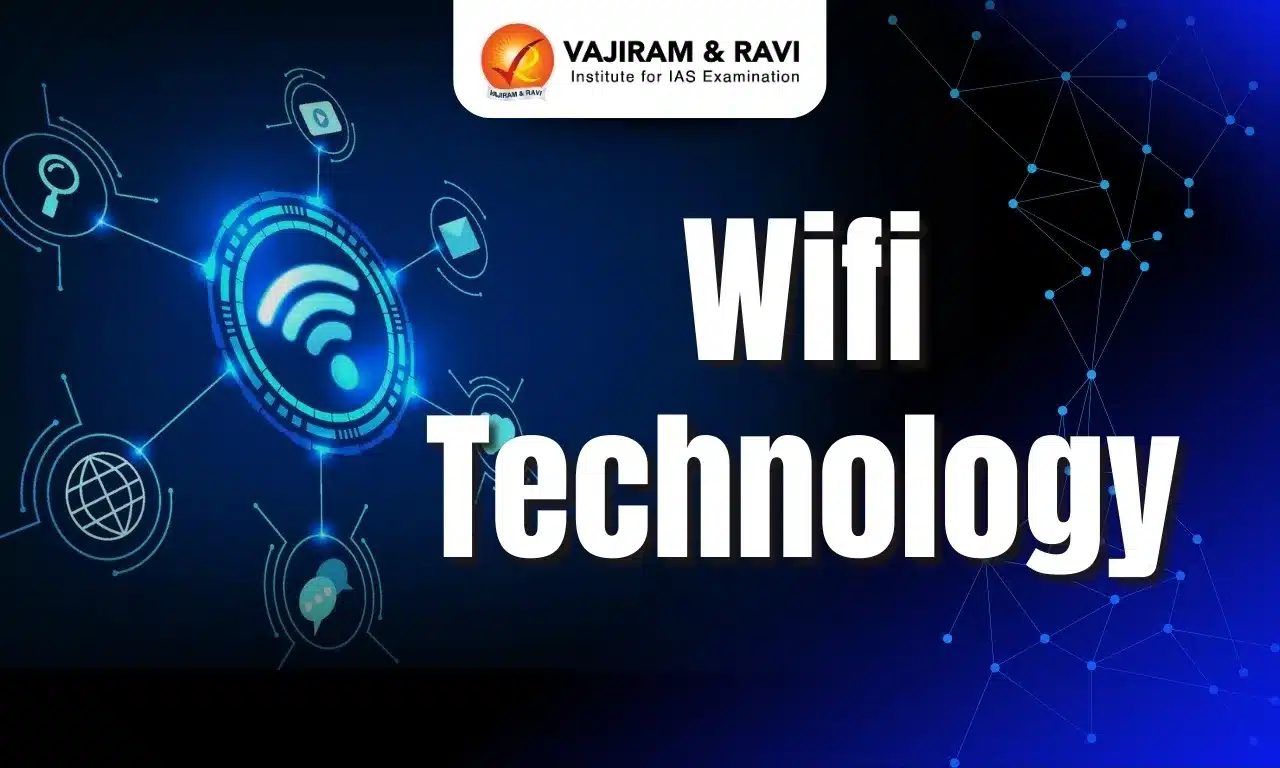Solar technologies use clean energy from the sun rather than polluted fossil fuels. There are two main types: solar thermal, which uses solar energy to heat water, and solar photovoltaic (PV), which uses solar cells to transform sunlight into electricity.
Global solar adoption is increasing as a result of declining costs and expanding access to clean energy (SDG 7). India can achieve its climate commitments in an environmentally sustainable manner, lessen its dependency on imported fuels, and promote social inclusion (SDG 10) by expanding access to solar applications and increasing solar capacity to 450 GW by 2030. Because of its boundless potential, solar energy is a vital ally for sustainable development.
Solar energy utilises the sun’s radiant light and heat to generate useful energy services like electricity, heating, cooling, lighting, or mechanical work. In recent years, solar technology has emerged as an important renewable energy source with significant potential to meet the world's energy needs in an eco-friendly manner.
Solar Energy - Working and Usage
- The sun radiates an enormous amount of energy in the form of electromagnetic radiation. Solar technologies utilise various methods to tap this abundant renewable energy source.
- There are two primary ways solar energy is harnessed -
- Direct conversion into electricity using photovoltaics.
- Capturing heat from the sun's rays to generate electricity indirectly.
- Usage: Solar technologies are scalable and flexible - they can power an entire city through solar farms, provide electricity in remote areas via decentralized systems, and light up homes and commercial buildings by installing rooftop solar panels.
- For example: Cochin International Airport
- Significance: The adoption of solar energy provides several benefits, including reducing reliance on depleting fossil fuels, mitigating carbon emissions, improving air quality, and boosting energy access and security, among others.
- Due to this, solar power's share in global electricity generation is rising steadily.
Types of Solar Energy
Solar energy is captured through three main technologies: photovoltaics (PV), converting light to electricity; concentrating solar power (CSP), utilising the sun's heat for electric turbines; and solar heating and cooling (SHC) systems, gathering thermal energy for hot water, air heating, or conditioning.
Solar Photovoltaic Technology
Solar photovoltaic (PV) technology converts sunlight directly into electricity through the photovoltaic effect. The term "photovoltaics" is derived from the conversion of light (photons) into electricity (voltage), a phenomenon known as the photovoltaic effect.
- PV cells are made of semiconductor materials like silicon. When sunlight strikes the cell, electrons are knocked loose from the atoms, generating electricity.
- Grid-connected systems feed surplus electricity back into the grid.
- In many regions, photovoltaic systems are being deployed at large scales to help power the electric grid.
- Methods: PV systems come with small rooftop solar installations, solar pumps, off-grid lighting systems, and large utility-scale solar power plants.
- Cost-effective: The costs of PV systems have fallen dramatically, making solar power cost-competitive.
- With weatherproof panels and no moving parts, PV systems require minimal maintenance and have long lifespans.
- Drawback: Solar PV generation relies on sunny weather and output varies throughout the day.
Concentrated Solar Power Technology
- Concentrated solar power (CSP) systems use mirrors to concentrate sunlight to drive traditional steam turbines or engines that generate electricity.
- CSP allows thermal energy storage by heating a storage medium during sunlight hours, which can then generate electricity even when the sun is not shining.
- CSP technologies include parabolic trough systems, linear Fresnel reflector systems, power tower/heliostat systems, and parabolic dish/engine systems.
- The higher temperatures enable CSP to operate more flexibly than PV power.
- Large-scale CSP plants have the advantage of inbuilt storage to provide dispatchable and reliable electricity generation.
- However, CSP systems require direct solar radiation and have not become cost-competitive with PV.
Solar Heating and Cooling Technology
Solar heating and cooling (SHC) technologies harness solar thermal energy for water heating, space heating, cooling, refrigeration, drying, and other applications.
- SHC systems convert sunlight into useful thermal energy that replaces electricity or fossil fuels.
- Solar collectors, often mounted on rooftops, absorb and retain heat from the sun which is transferred to a fluid and used via heat exchangers.
- Common SHC devices include solar water heaters, solar air heaters/dryers, solar cookers, solar stills, and solar absorption cooling systems.
- Solar thermal systems provide clean energy services and avoid significant greenhouse gas emissions.
- SHC systems have become popular across the world due to their cost-effectiveness and environmental benefits.
- However, the potential of SHC still needs to be utilised and needs greater adoption.
Solar Photovoltaic vs Solar Thermal
| Parameter | Solar Photovoltaic | Solar Thermal |
| Technology | Converts sunlight directly into electricity using solar PV cells. | Captures heat from sunlight to heat a fluid, which is then used for applications needing heat |
| Typical applications | Electricity generation and powering appliances/devices. | Water heating, space heating, industrial process heat. |
| Solar conversion efficiency | 15-20% | 50-80% |
| Cost | Higher initial investment, lower operating costs. | Lower initial investment, higher operating costs. |
| Storage | Batteries used for electricity storage | Thermal energy storage in tanks/pits used. |
| Supply | Provides electricity, but needs a grid for overnight/cloudy days | It provides thermal energy for direct heating applications. |
| Pollution | No emissions during operation. | Some systems use gases with small carbon footprints. |
| Land required | About 1 hectare per 1 MW for utility-scale. | Lower land requirements compared to PV. |
| Commercial maturity | Well-established commercially with rapidly declining costs. | Relatively less adoption is key for solar thermal heating. |
| India potential | Huge potential for both centralized and decentralized PV power. | Considerable potential for solar water heating especially. |
Applications of Solar Energy
Solar thermal technologies harness solar heat energy for direct thermal applications like:
- Power generation: Solar PV and CSP plants of utility-scale, rooftop-scale, or off-grid installations generate clean electricity.
- Example: Bhadla Solar Park in Rajasthan with 2245 MW capacity.
- Water heating: Solar collectors are used to heat water for domestic, commercial and industrial needs, reducing electricity/fuel consumption.
- Pumping: Solar PV panels power water pumps for irrigation and drinking water, especially in rural areas.
- Example: Solar pumps promoted under the PM-KUSUM scheme.
- Lighting: Solar lanterns and home lighting systems provide clean lighting solutions using small PV panels and batteries.
- Example: SELCO's solar lighting for rural households.
- Cooking: Solar cookers with reflective mirrors are used for cooking applications without electricity/fuels.
- Vehicles: Solar PV cells provide part of the propulsion power for electric vehicles like cars, boats, etc., reducing fossil fuel use.
- Example - Lightyear One EV with solar-assisted charging.
- Desalination: Solar thermal energy is used for desalinating seawater to produce potable water.
- Example - BARC's solar desalination system.
- Space heating/cooling: Solar collectors provide space heating in winter and cooling in summer.
- Example - Solar absorption cooling system at TERI office.
Disadvantages of Solar Energy
Some challenges of Solar Energy include:
- Intermittency: Solar energy cannot be generated at night and output varies due to cloud cover and seasons.
- Storage: Effective, large-scale energy storage solutions are still being developed to mitigate intermittency.
- Space requirements: Solar farming requires large land areas with high solar insolation.
- High upfront costs: The initial capital costs of solar systems can be high.
- Transmission: Solar farms may require expensive transmission lines to connect to the grids.
- Efficiency: Most silicon solar cells have efficiencies of around 15-20% with theoretical limits of around 30%.
Emerging Solar Technologies
Solar power technologies are rapidly evolving and gaining prominence as countries push for increased renewable energy adoption. Key developments include:
- Floating solar PV farms: Modules are mounted on floating structures on water bodies instead of ground installation.
- Example: A 600 MW floating solar farm is being set up at Omkareshwar Dam in Madhya Pradesh. It helps overcome land constraints.
- Solar windows: Transparent solar glass windows that can generate electricity through transparent solar cells while also providing natural lighting.
- Example: Ubiquitous Energy has developed transparent solar windows that can be installed on high-rise building facades.
- Perovskite solar cells: Employ perovskites as light absorbers having the potential for high efficiencies and low costs.
- Example: Oxford PV has achieved 28% efficiency in perovskite solar cells, nearing silicon cell efficiency.
- Space-based solar power: Captures solar energy in space via orbital PV systems and transmits to the Earth via microwaves/lasers.
- Example: Potential to overcome intermittency issues and provide baseload power. ISRO and NASA are conducting joint research in this area.
- Solar fuels: Use concentrated solar thermal energy to facilitate thermochemical reactions to produce clean fuels like hydrogen from water splitting.
- Example: Heliogen has developed concentrated solar plants integrated with thermal reactors to generate solar fuels.
- Bifacial Solar Cells: They have both front and back photo-sensitive surfaces to capture reflected light, generating up to 30% more energy than traditional panels. Global installation is rising, given higher efficiency and cost benefits.
- Solar Trees: Resemble a tree with solar panels mounted like branches on a central pillar. Require minimal land area compared to ground installations while producing equivalent power.
- Support agriculture activities by providing shaded spaces for machinery, water pumps, etc.
- India has installed the world's largest solar tree, with 11.5 kW of capacity.
- Solar Carports: Solar panels are installed as rooftops over vehicle parking areas to generate power while providing shade. Dual land use improves efficiency. Carports with solar tracking to optimize generation are being adopted.
- Tata Motors installed India's largest 6.2 MW solar carport at its Pune facility.
- Agrivoltaics: Solar installations on agricultural land in a way that permits continued cultivation underneath.
- Dual land use improves efficiency while diversifying farmer income. Being piloted in several regions, including India.
- Building integrated photovoltaics (BIPV): Solar cells integrated into building materials, serving as construction surfaces and electricity generators.
- It helps avoid separate land requirements but has higher installation complexity and costs.
With enlightened policy frameworks, solar energy can propel sustainability worldwide. The infinite potential of the sun is one of our greatest allies in our collective efforts to combat climate change and achieve the SDGs.
Last updated on January, 2026
→ Check out the latest UPSC Syllabus 2026 here.
→ Join Vajiram & Ravi’s Interview Guidance Programme for expert help to crack your final UPSC stage.
→ UPSC Mains Result 2025 is now out.
→ UPSC Notification 2026 is scheduled to be released on January 14, 2026.
→ UPSC Calendar 2026 has been released.
→ UPSC Prelims 2026 will be conducted on 24th May, 2026 & UPSC Mains 2026 will be conducted on 21st August 2026.
→ The UPSC Selection Process is of 3 stages-Prelims, Mains and Interview.
→ Prepare effectively with Vajiram & Ravi’s UPSC Prelims Test Series 2026 featuring full-length mock tests, detailed solutions, and performance analysis.
→ Enroll in Vajiram & Ravi’s UPSC Mains Test Series 2026 for structured answer writing practice, expert evaluation, and exam-oriented feedback.
→ Join Vajiram & Ravi’s Best UPSC Mentorship Program for personalized guidance, strategy planning, and one-to-one support from experienced mentors.
→ UPSC Result 2024 is released with latest UPSC Marksheet 2024. Check Now!
→ UPSC Toppers List 2024 is released now. Shakti Dubey is UPSC AIR 1 2024 Topper.
→ Also check Best UPSC Coaching in India
Solar Energy FAQs
Q1. What are the different solar energy technologies?+
Q2. How do solar panels work?+
Q3. What are the different CSP technologies?+
Q4. What are the main types of solar thermal collectors?+
Tags: quest solar energy

















